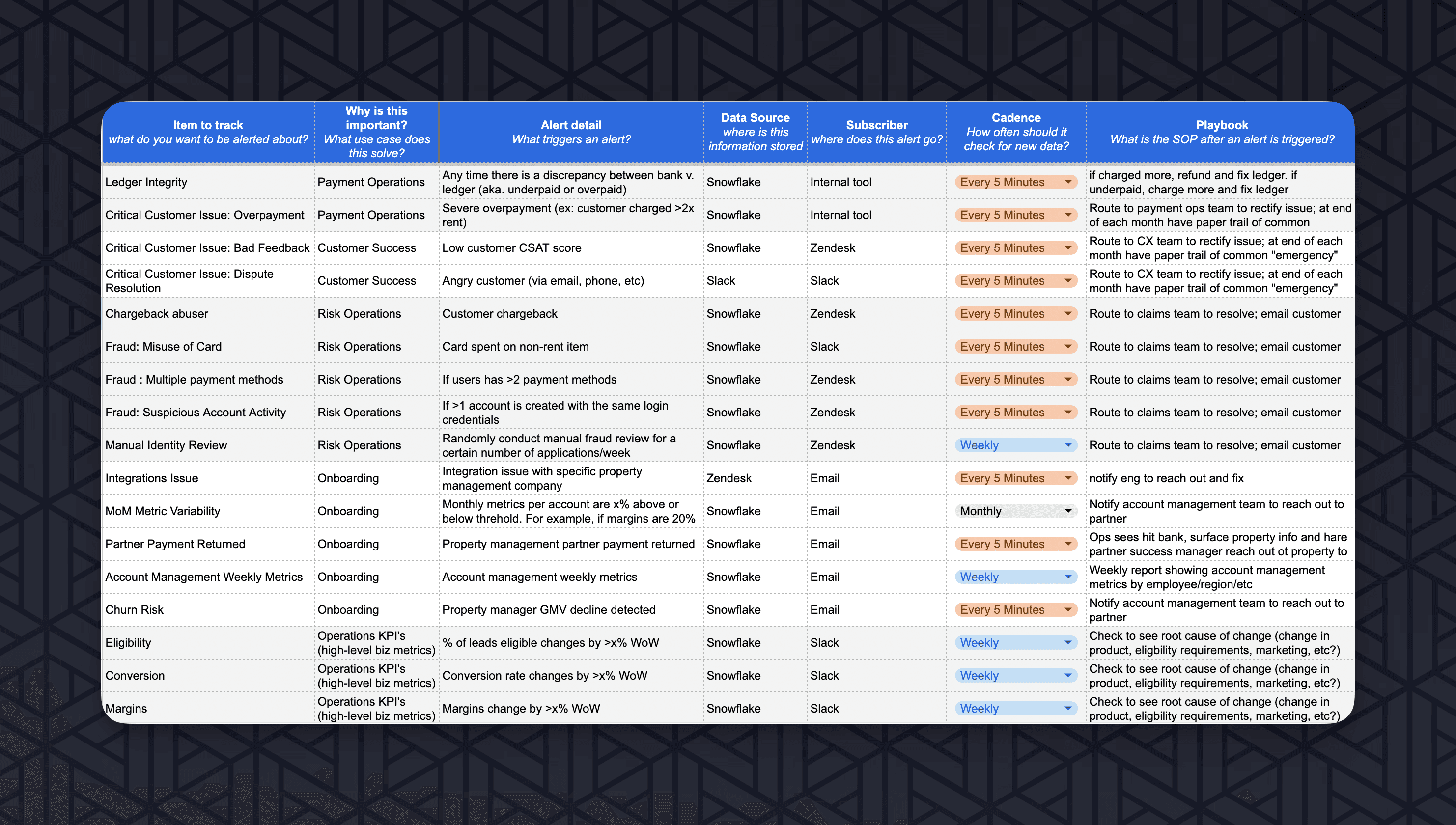Tip & Tricks
Drawing insights from operations leaders at Uber, Airbnb, and DoorDash, we've distilled best practices for operations alerting. Alerts should let your operations team spend less time searching for issues and more time solving them. Here’s how the most efficient operations monitor:
1. The Essence of the Alert: Define What Matters
What deserves your attention? Pinpoint exactly what you need to be alerted about. It's crucial to understand why an alert warrants your immediate focus and how it contributes to solving operational challenges.
2. Timeliness: Aligning Alert Triggers with Operational Needs
The timing of an alert is as critical as its content. Determine whether you need real-time notifications or if a weekly summary suffices. Tailoring the frequency to your operational rhythm can drastically improve efficiency.
3. Context is King: Crafting Content-Rich Alerts
An alert devoid of context is a recipe for confusion. Ensure each alert is packed with all necessary information, leveraging data from your tools and manual inputs. This enables quicker decision-making and effective problem-solving.
4. Seamless Integration: Delivering Alerts Where They're Most Effective
Alerts should flow naturally into your team's workflow. Send alerts to the tools your team already spends time in (Slack, email, Zendesk) to ensure alerts are seen and acted upon promptly, without disrupting the daily routine.
5. Ownership: Assigning Accountability
Clear ownership is vital. Define who creates the alert and who is responsible for addressing it, both at the team and individual levels. This clarity prevents oversights and ensures swift action.
6. Follow-Through: Establishing a Playbook
Once an alert is fired, what’s next? Outline explicit procedures for acknowledgment and resolution. This might include a set of actions or reference to a playbook for guidance.
7. The Bigger Picture: Alerts as Part of Your Operational Strategy
Every alert should feed into a larger operational strategy. They're not just notifications; they're tools for continuous improvement and efficiency.
To see an example of effective alerting at play – check out the alerting framework used by a Buy Now, Pay Later company to achieve 100% SLA’s across customer service, risk, and onboarding.

Looking to set up an alerting system without engineering? Get started today.











